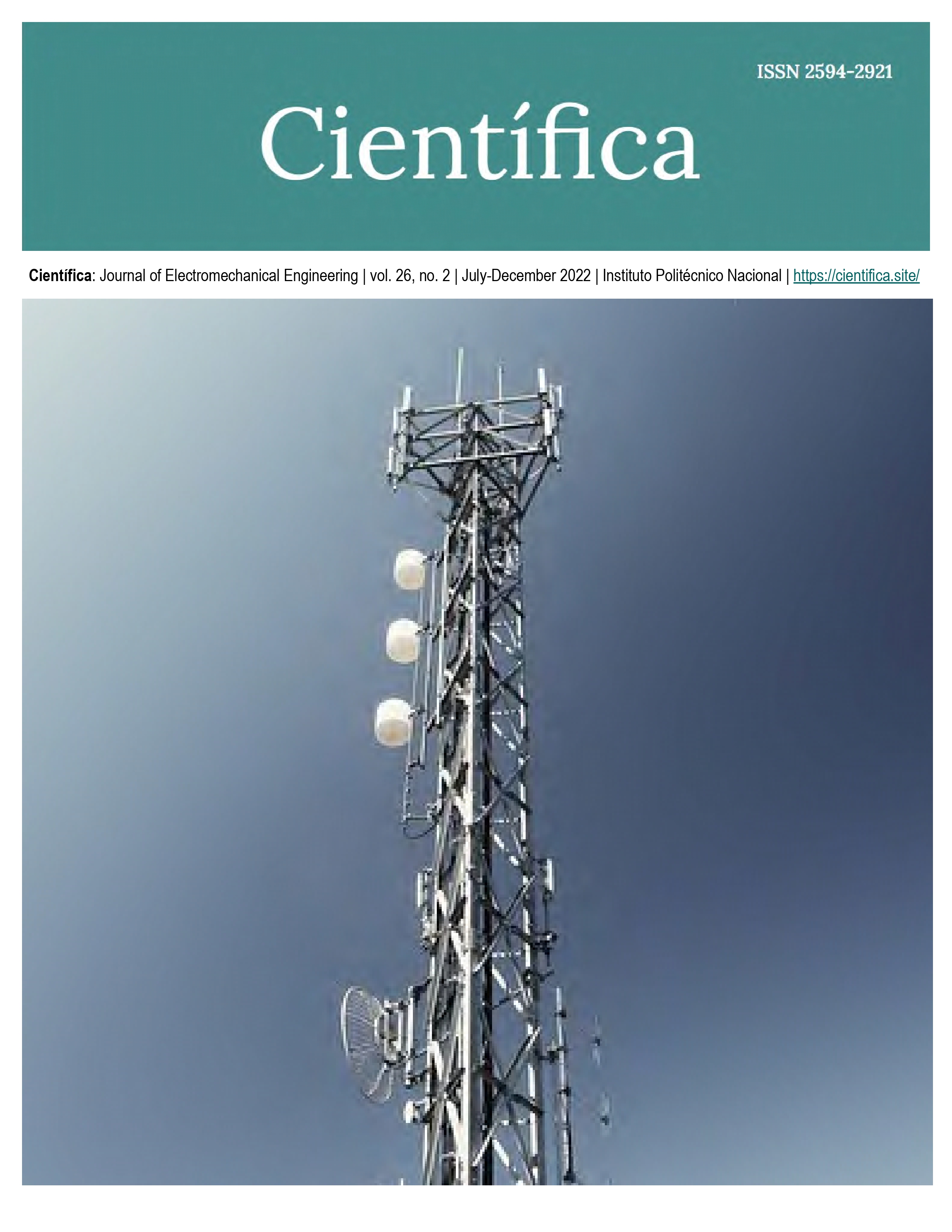Reconocimiento de expresiones faciales con vision transformer
DOI:
https://doi.org/10.46842/ipn.cien.v26n2a02Palabras clave:
vision transformer, facial expressions, emotion recognitionResumen
La identificación de emociones a través de la lectura de señales no verbales, como gestos y expresiones faciales, ha generado una nueva aplicación en el campo del Reconocimiento de Expresión Facial (FER por sus siglas en ingles) y la interacción humano ordenador. A través del reconocimiento de expresiones faciales, sería posible mejorar los equipos industriales haciéndolos más seguros a través de la inteligencia social que tiene excelentes aplicaciones en el área de la seguridad industrial. Es por ello que en esta investigación se propone clasificar una serie de imágenes de la base de datos denominada FER-2013, que contiene datos sobre siete emociones distintas, las cuales son enfado, asco, miedo, alegría, tristeza, sorpresa, neutral. Para el reconocimiento de expresiones se implementó la arquitectura Vision Transformer, de la cual se obtuvo un 87% de exactitud, mientras que la exactitud más alta fue de 99%.
Referencias
C. V. R. Reddy, K. V. K. Kishore, “Facial emotion recognition using NLPCA and SVM”, Traitement du Signal, 2019, vol. 36, no 1, pp. 13-22.
International Labour Organization, 2021, https://www.ilo.org/global/lang--en/index.htm
R. N. Sari, D. S. Dewi, “Development models of personality, social cognitive, and safety culture to work accidents in the chemical company”, In IOP Conference Series: Materials Science and Engineering IOP Publishing, 2021 vol. 1096 no. 1, pp. 012-025.
Y. Kong, H. F. Posada-Quintero, M. S. Daley, K. H. Chon, J. Bolkhovsky, “Facial features and head movements obtained with a webcam correlate with performance deterioration during prolonged wakefulness”, Attention, Perception, & Psychophysics, 2021, vol. 83, no. 1, pp. 525-540.
A. S. Kumar, N. Pranavi, S. G. P. Dharshini, “Emotions Based Voice Supportive Model Using SVM” In 2021 International Conference on Engineering and Emerging Technologies (ICEET) IEEE, 2021, pp. 1-4.
A. Poulose, C. S. Reddy, J. H. Kim, D. S. Han, “Foreground Extraction Based Facial Emotion Recognition Using Deep Learning Xception Model”. In 2021 Twelfth International Conference on Ubiquitous and Future Networks (ICUFN), IEEE, 2021, pp. 356-360.
D. Mehta, M. F. H Siddiqui, A. Y. Javaid, “Facial emotion recognition: A survey and real-world user experiences in mixed reality”, Sensors, 2018, vol. 18, no. 2, pp. 416.
W. Mellouk, W. Handouzi, “Facial emotion recognition using deep learning: review and insights”, Procedia Computer Science, 2020, no. 175, pp. 689-694
L. Lusquino-Filho, F. M. França, P. M. Lima, “Near-optimal facial emotion classification using a WiSARD-based weightless system”, In ESANN 2020.
A. Alreshidi, M. Ullah, “Facial emotion recognition using hybrid features”, Informatics, Multidisciplinary Digital Publishing Institute, 2020, vol. 7, no. 1, p. 6.
F. Ma, B. Sun, S. Li, “Robust facial expression recognition with convolutional visual transformers”, 2021 arXiv preprint arXiv:2103.16854
M. Behzad, X. Li, G. Zhao, “Disentangling 3D/4D Facial Affect Recognition with Faster Multi-View Transformer” IEEE Signal Processing Letters, 2021, no. 28, pp. 1913-1917.
H. Li, M. Sui, F. Zhao, Z. Zha, F. Wu, “MViT: Mask Vision Transformer for Facial Expression Recognition in the wild” 2021. arXiv, preprint arXiv:2106.04520.
F. Xue, Q. Wang, G. Guo “TransFER: Learning Relation-aware Facial Expression Representations with Transformers”, In Proceedings of the IEEE/CVF International Conference on Computer Vision, 2021, pp. 3601-3610.
M. Aouayeb, W. Hamidouche, C. Soladie, K. Kpalma, R. Seguier, R. “Learning vision transformer with squeeze and excitation for facial expression recognition”, 2021, arXiv, preprint arXiv:2107.03107.
H. Li, M. Sui, Z. Zhu, F. Zhao, “MFEViT: A Robust Lightweight Transformer-based Network for Multimodal 2D+ 3D Facial Expression Recognition”, 2021, arXiv, preprint arXiv:2109.13086.
O. Arriaga, M.Valdenegro-Toro, P. Plöger, “Real-time convolutional neural networks for emotion and gender classification”, 2017, arXiv, preprint arXiv:1710.07557
H. Yar, T. Jan, A. Hussain, S.U. Din, “Real-Time Facial Emotion Recognition and Gender Classification for Human-Robot Interaction Using CNN” The 5th International Conference on Next Generation Computing, 2020.
T. Raksarikorn, T. Kangkachit, “Facial expression classification using deep extreme inception networks” In 2018 15th International Joint Conference on Computer Science and Software Engineering (JCSSE), no. 06, 2018, pp. 1-5.
L. Zahara, P. Musa, E. P. Wibowo, I. Karim, S. B. Musa, S. B “The Facial Emotion Recognition (FER-2013) Dataset for Prediction System of Micro-Expressions Face Using the Convolutional Neural Network (CNN) Algorithm based Raspberry Pi”, In 2020 Fifth International Conference on Informatics and Computing (ICIC), no. 11, 2020, pp. 1-9.
J.H. Shah, M. Sharif, M. Yasmin, S. L. Fernandes, “Facial expressions classification and false label reduction using LDA and threefold SVM”, Pattern Recognition Letters, 2020, no. 139, pp. 166-173.
S. Lysenko, N. Seethapathi, L. Prosser, K. Kording, M.J. Johnson, “Towards Automated Emotion Classification of Atypically and Typically Developing Infants”, In 2020 8th IEEE RAS/EMBS International Conference for Biomedical Robotics and Biomechatronics (BioRob), no. 11, 2020, pp. 503-508.
A. Nasuha, F. Arifin, A.S. Priambodo, N. Setiawan, N. Ahwan, “Real-Time Emotion Classification Based on Convolution Neural Network and Facial Feature”, Journal of Physics: Conference Series, 2021, vol. 1737, no. 1,
A. Dosovitskiy, L. Beyer, A. Kolesnikov, D. Weissenborn, X. Zhai, T. Unterthiner, T., N. Houlsby, “An image is worth 16x16 words: Transformers for image recognition at scale”, 2021, arXiv, preprint arXiv:2010.11929.
A. Vaswani, N. Shazeer, N. Parmar, J. Uszkoreit, L. Jones, A. N. Gomez, I. Polosukhin, “Attention is all you need”, Advances in neural information processing systems, 2017, pp. 5998-6008.
Descargas
Publicado
Número
Sección
Licencia
Derechos de autor 2022 Instituto Politécnico Nacional

Esta obra está bajo una licencia internacional Creative Commons Atribución-NoComercial-CompartirIgual 4.0.

